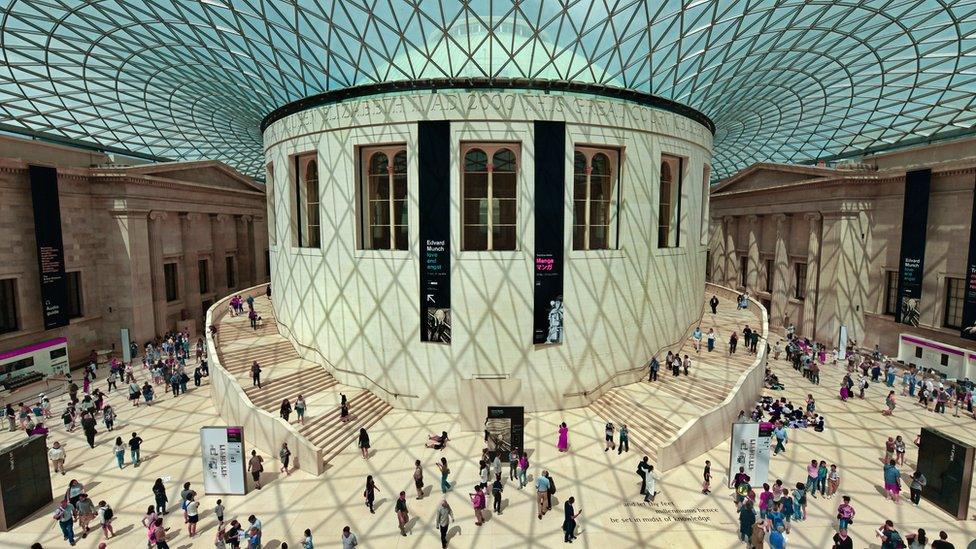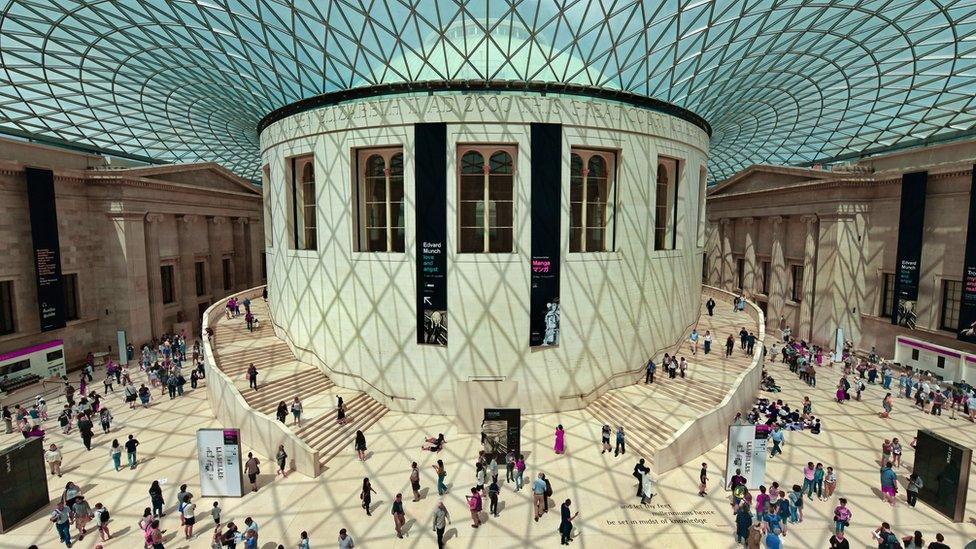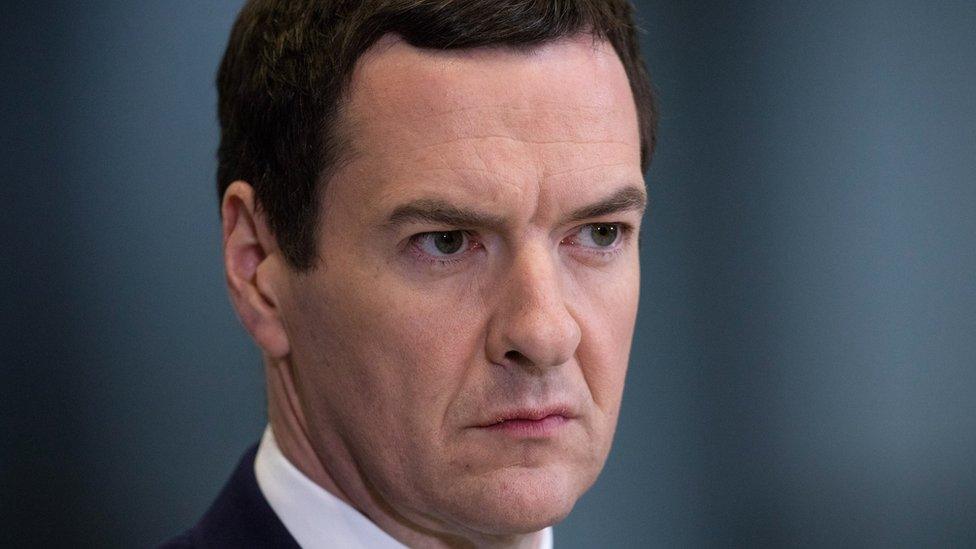George Osborne: Former chancellor named British Museum chairman
- Published

George Osborne is a former Conservative MP and editor of The Evening Standard
Former chancellor George Osborne has been named as the next chairman of the British Museum.
The 50-year-old, who stepped down as The Evening Standard's editor earlier this year, will join the museum's board of trustees on 1 September.
A month later, on 4 October, he will formally succeed Sir Richard Lambert as chairman. It is an unpaid role.
Osborne said he was "absolutely thrilled to be joining the team" at the British Museum.
"[I'm] so honoured to have had the opportunity to apply for this role, and to have been chosen by the trustees to become their chair," Osborne added in his statement.
"All my life I have loved the British Museum. To my mind, it is quite simply the greatest museum in the world. It's a place that brings cultures together and tells the story of our common humanity."

The British Museum is one of the top visitor attractions in the UK
The board approved his appointment unanimously, according to the museum.
Osborne, who used to be a Conservative MP, also became a partner at investment bank Robey Warshaw in April and remains chairman of the Northern Powerhouse Partnership.
Baroness Minouche Shafik, deputy chair of the British Museum, said Mr Osborne would be working with the board to expand the institution's audience as it embarked on a "major programme of renewal".
Hartwig Fischer, the director of the British Museum, said the museum was undergoing the "biggest transformative project" in its history.
He added: "George Osborne knows the museum well and values the trust the museum enjoys around the world.
"He understands the active role the British Museum is playing in the recovery of the country, creating opportunities for everyone to discover the collection as their own - onsite, through loans to their local museums and online."
Allow X content?
This article contains content provided by X. We ask for your permission before anything is loaded, as they may be using cookies and other technologies. You may want to read X’s cookie policy, external and privacy policy, external before accepting. To view this content choose ‘accept and continue’.

Last year, the British Museum became embroiled in a debate about how institutions should present controversial items from Britain's past.
The museum had redisplayed a bust of founding father Hans Sloane in its Enlightenment Gallery, but some drew attention to his ownership of slaves.
After the government said museums could lose taxpayer support if they remove artefacts, the British Museum reassured the public it had "no intention of removing controversial objects from display".
But, it said, it would seek to "contextualise" such items "in a way that enables the public to learn about them in their entirety".
The British Museum is one of the top visitor attractions in the UK, but it spent much of the last year with its doors closed to the public due to the pandemic.
Prior to that, it attracted more than five million visitors per year.
You might also be interested in:

Follow us on Facebook, external, or on Twitter @BBCNewsEnts, external. If you have a story suggestion email entertainment.news@bbc.co.uk, external.
Related topics
- Published28 September 2020

- Published12 June 2020

- Published13 November 2020
